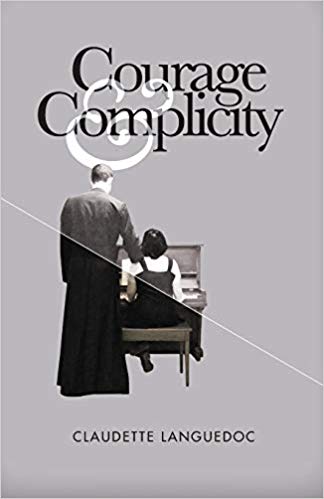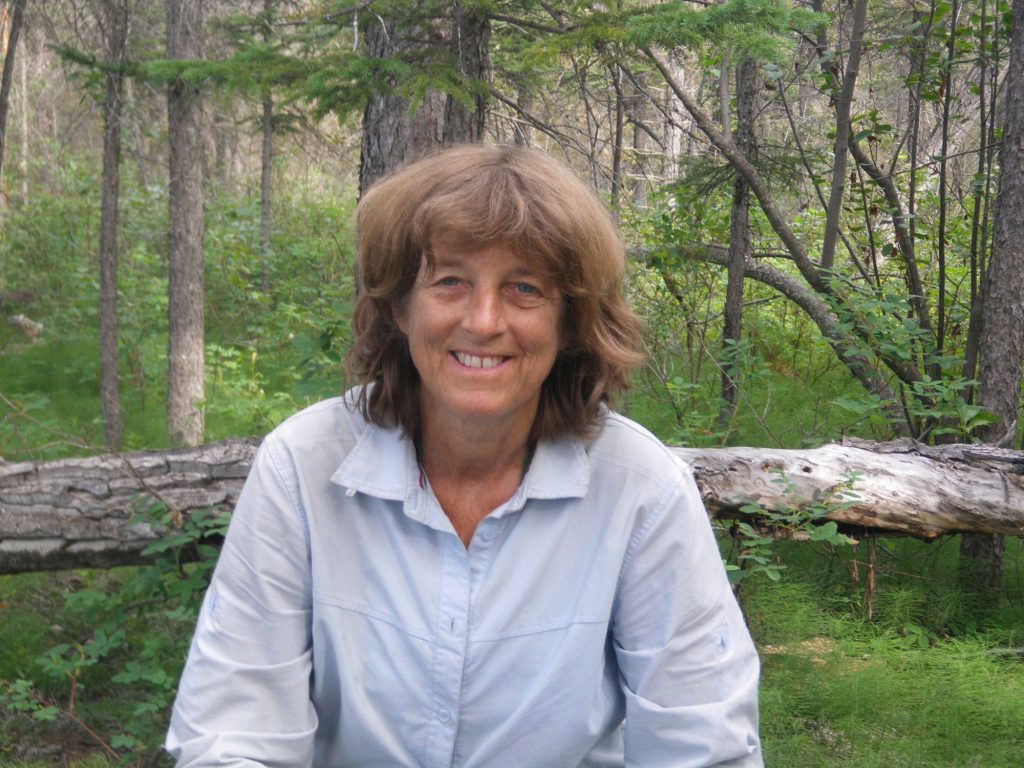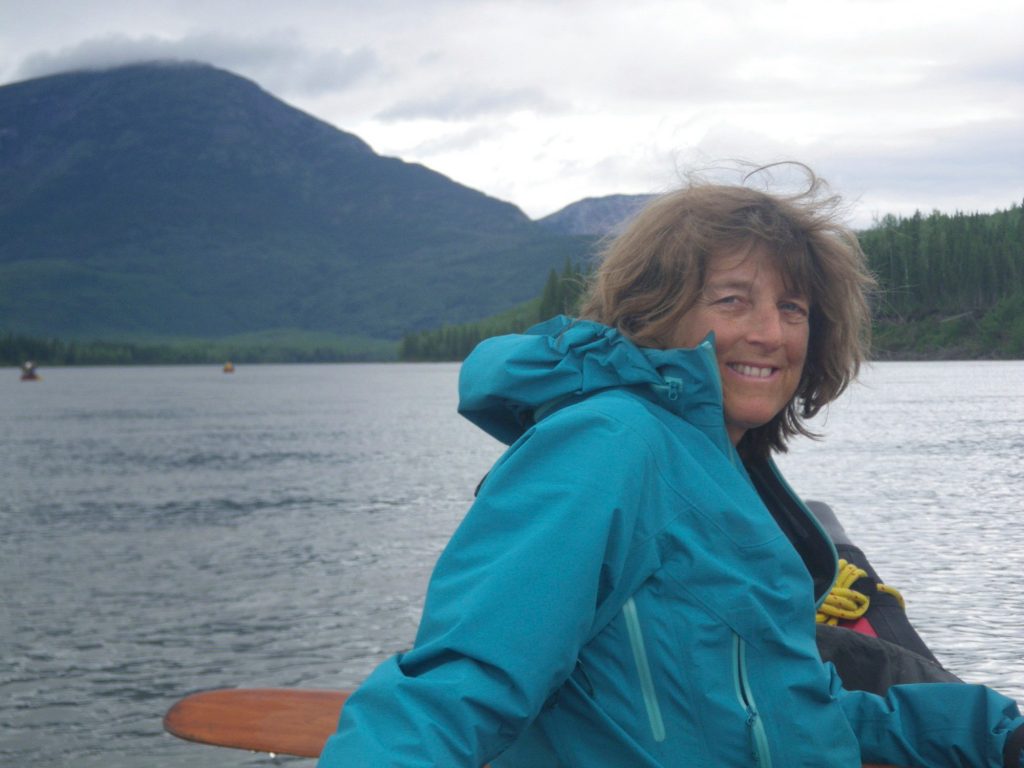 JAMES STRECKER: Please tell us about one or more projects that you have been working on or have recently completed. Why exactly do they matter to you and why should they matter to us?
JAMES STRECKER: Please tell us about one or more projects that you have been working on or have recently completed. Why exactly do they matter to you and why should they matter to us?
CLAUDETTE LANGUEDOC: The book I have recently completed, Courage and Complicity, is the fictional story of a young white woman who, in the late 40s, travels north from Toronto to teach at an Indian Residential School. Mary begins her time at Bear Lake Indian Residential School as a wide-eyed neophyte eager to prove herself and excited to meet her students. When the underbelly of the school becomes impossible to ignore, her attempts to make changes are met by a wall of indifference and submission. Outside the school, she gets her own life lessons from people on both sides of the tracks that divide the town of Bear Lake, literally and figuratively, into white and “Indian”.
I believe that we, as a country, need to face up to our past. But the legacy of residential schools, both as a trigger and as a symbol of Canada’s attitude toward the Indigenous people who live here, has created an anger and frustration that has co-opted many attempts at meaningful dialogues. Issues relating to Indigenous people living in Canada are seldom raised without strong emotions from both sides which makes meaningful dialogue difficult at best.
I think that part of the problem is that most non-Indigenous people cannot hear the residential school story without hearing the anger and blame. Emotions they believe are directed at them, which they feel is unfair. So instead of listening, they build their own walls. What I want to do with this book is to present, to non-Indigenous Canadians, a story that they can engage in. I want to show the insidious nature of bigotry and racism, without the anger, and to encourage those who believe they are not racist, to look more deeply into the beliefs and biases that most of us in the white world unknowingly buy into. I want people who have never had any personal connection with residential schools to get a personal perspective, through Mary and her experiences.
JS: What might others not understand or appreciate in the work you produce or do?
CL: I am curious to hear what Indigenous people think of this work. It is a sensitive and topical story. I hope I have presented it sensitively.
JS: What are the most important parts of yourself that you put into your work?
CL: I went through a phase where I felt deeply ashamed of just being white. Shame is not a pleasant place to be. The residential school system routinely used shame to subjugate their students, so perhaps it is useful for my writing that I felt this way. But the most important part of myself that I put into this book, was to try and look honestly and how I would have dealt with residential school had I been a young teacher there. I trust that this honesty comes through and makes the book more believable. My protagonist is no heroine.
JS: What are your biggest challenges as a creative person?
CL: My biggest challenge, in this work, was to be objective and to avoid preaching.
JS: Imagine that you are meeting two or three people, living or dead, whom you admire in your form of artistic expression. What would you say to them and what would they say to you?
CL: I would love to meet Rumi, and just sit in his presence. His writing, even translated brings together joy and wisdom, humanity and divinity in a way few others have mastered.
I would also love to meet Shingwauk. He was an Anishinaabe leader in the early days of residential schools. He supported the idea of young people getting a western education. I would love to have the chance to talk to him and to understand his vision.
JS: Please describe at least one major turning point in your life that helped to make you who you are as a creative artist.
CL: Being part of a writing group has made a huge difference to me as a writer. It has meant that I am constantly being asked to write, with a deadline. Hearing other people’s interpretations of the same prompt has been very influential as well, and helped me look at whatever I write more objectively.
JS: What are the hardest things for an outsider to understand about your life as a person in the arts?
CL: That writing is a job.
JS: Please tell us what you haven’t attempted as yet that you would like to do in the arts? Why the delay so far?
CL: A children’s book. I need to find an artist!
JS: If you could re-live your life in the arts, how would you change it and why?
CL: I would read more, and give more value to sitting down with a good book. In our/my busy life, sitting with a book is something I still see as the last thing on my list, something to do when everything else is done. It’s rare that “everything else” is ever done, so reading happens in bits and pieces.
JS: Let’s talk about the state of the arts in today’s society, including the forms in which you work. What specifically gives you hope and what specifically do you find depressing?
CL: At the depressing end is the short attention span that seems to be prevalent today. And especially the lack of time many people have to just think. Even the trip to work, walking the dog or a trip on the bus, is occupied with podcasts and games.
At the hopeful end is the acceptance of any and all types of artistic expression. We are seeing large scale works such as performance arts, and interactive installations. “Graphic novel” sounds much more legitimate than “comic book”. Macramé around lampposts and murals on the sides of building provide us with a view of artistic expression without ever entering an art gallery.
JS: If you yourself were a critic of the arts discussing your work, be it something specific or in general, what would you say?
CL: Many people have told me, in response to the book, that it is well balanced. I’m not sure if an Indigenous person would feel the same, but I think that as a general critical comment, I would agree. Many of those same people have said that it was the first time that they were able to empathize with survivors of residential schools and the intergenerational trauma it produced. So, specifically, I would say that using a white woman as a protagonist was a unique device to make the residential school story accessible to non-Indigenous readers.
JS: Finally, what do you yourself find to be the most intriguing and/or surprising things about you?
CL: I think that what most people would not expect, is that, at 66, I am still doing canoe trips. What continues to surprise me about myself is that, at 66, I still care about what people think of me. And I haven’t learned to read their minds, although sometimes I like to think that I have!


